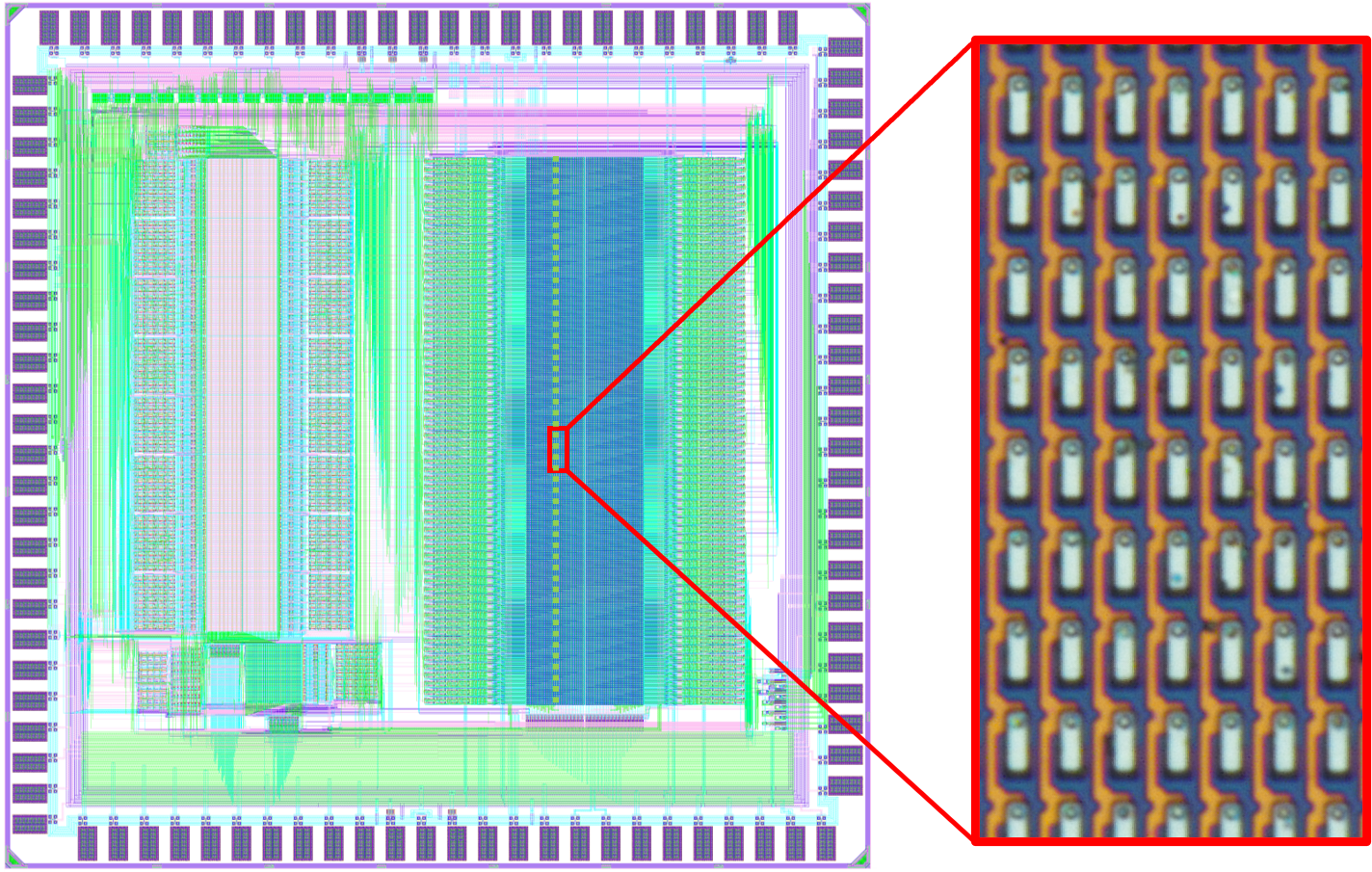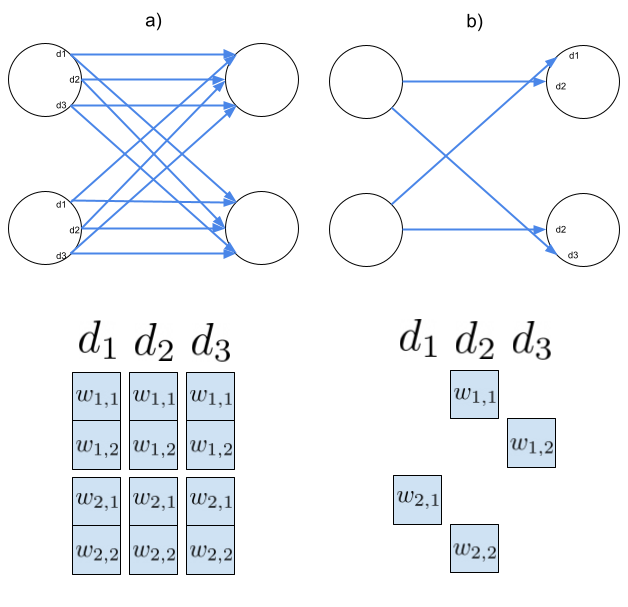Synaptogen: A cross-domain generative device model for large-scale neuromorphic circuit design

0

Sign in to get full access
Overview
- This paper introduces Synaptogen, a novel generative device model for large-scale neuromorphic circuit design.
- Synaptogen aims to enable the efficient design and simulation of complex neuromorphic systems by capturing the cross-domain behavior of electronic devices.
- The model is designed to work across different device types, including resistive memory, spiking neural networks, and neuromorphic hardware.
Plain English Explanation
Designing and building large-scale neuromorphic circuits, which are electronic systems inspired by the human brain, can be a complex and challenging task. Synaptogen: A cross-domain generative device model for large-scale neuromorphic circuit design introduces a new tool called Synaptogen that can help make this process easier.
Synaptogen is a type of computer model that can predict how different electronic devices will behave when used in neuromorphic circuits. These devices include things like resistive memory, which stores information by changing the resistance of materials, and spiking neural networks, which mimic the way neurons fire in the brain.
By capturing the complex interactions between these different electronic components, Synaptogen allows researchers and engineers to design and simulate large-scale neuromorphic systems more efficiently. This could lead to the development of more powerful and energy-efficient brain-inspired computers and other technologies.
Technical Explanation
Synaptogen: A cross-domain generative device model for large-scale neuromorphic circuit design presents a novel generative device model that aims to enable the efficient design and simulation of complex neuromorphic systems. The model is designed to capture the cross-domain behavior of electronic devices, allowing it to work across different device types, including resistive memory, spiking neural networks, and neuromorphic hardware.
The researchers developed Synaptogen by leveraging a combination of electrical measurements, device physics simulations, and machine learning techniques. This allows the model to accurately capture the intricate relationships between device-level parameters and the emergent behavior of neuromorphic circuits.
One of the key innovations of Synaptogen is its ability to generate synthetic device data, which can be used to train larger-scale neuromorphic system models. This can significantly reduce the time and effort required to design and simulate complex neuromorphic architectures, ultimately accelerating the development of brain-inspired computing technologies.
Critical Analysis
The research presented in this paper represents an important step forward in the field of neuromorphic computing. By introducing a cross-domain generative device model like Synaptogen, the authors have provided a powerful tool for researchers and engineers to design and simulate large-scale neuromorphic systems more efficiently.
However, the paper does acknowledge some limitations of the Synaptogen model. For example, the accuracy of the model may be influenced by the quality and diversity of the training data used, and further refinements may be needed to capture the full range of device behaviors encountered in real-world neuromorphic applications.
Additionally, while the paper demonstrates the potential of Synaptogen through various case studies, more extensive validation and testing would be needed to fully assess the model's capabilities and robustness across a broader range of neuromorphic architectures and use cases.
Overall, the Synaptogen model represents a significant advancement in the field of neuromorphic computing, and the research presented in this paper lays the groundwork for further development and refinement of cross-domain generative device models for large-scale neuromorphic circuit design.
Conclusion
Synaptogen: A cross-domain generative device model for large-scale neuromorphic circuit design introduces a novel tool that could greatly simplify the design and simulation of complex neuromorphic systems. By capturing the intricate cross-domain behaviors of electronic devices, Synaptogen enables researchers and engineers to more efficiently develop advanced brain-inspired computing technologies.
While the research presents promising results, further development and validation of the Synaptogen model will be necessary to fully realize its potential. Nonetheless, this work represents an important step forward in the field of neuromorphic computing, and could pave the way for the creation of more powerful and energy-efficient brain-inspired computing systems in the future.
This summary was produced with help from an AI and may contain inaccuracies - check out the links to read the original source documents!
Related Papers


0
Synaptogen: A cross-domain generative device model for large-scale neuromorphic circuit design
Tyler Hennen, Leon Brackmann, Tobias Ziegler, Sebastian Siegel, Stephan Menzel, Rainer Waser, Dirk J. Wouters, Daniel Bedau
We present a fast generative modeling approach for resistive memories that reproduces the complex statistical properties of real-world devices. To enable efficient modeling of analog circuits, the model is implemented in Verilog-A. By training on extensive measurement data of integrated 1T1R arrays (6,000 cycles of 512 devices), an autoregressive stochastic process accurately accounts for the cross-correlations between the switching parameters, while non-linear transformations ensure agreement with both cycle-to-cycle (C2C) and device-to-device (D2D) variability. Benchmarks show that this statistically comprehensive model achieves read/write throughputs exceeding those of even highly simplified and deterministic compact models.
Read more4/10/2024
🧪

0
Voltage-Controlled Magnetoelectric Devices for Neuromorphic Diffusion Process
Yang Cheng, Qingyuan Shu, Albert Lee, Haoran He, Ivy Zhu, Haris Suhail, Minzhang Chen, Renhe Chen, Zirui Wang, Hantao Zhang, Chih-Yao Wang, Shan-Yi Yang, Yu-Chen Hsin, Cheng-Yi Shih, Hsin-Han Lee, Ran Cheng, Sudhakar Pamarti, Xufeng Kou, Kang L. Wang
Stochastic diffusion processes are pervasive in nature, from the seemingly erratic Brownian motion to the complex interactions of synaptically-coupled spiking neurons. Recently, drawing inspiration from Langevin dynamics, neuromorphic diffusion models were proposed and have become one of the major breakthroughs in the field of generative artificial intelligence. Unlike discriminative models that have been well developed to tackle classification or regression tasks, diffusion models as well as other generative models such as ChatGPT aim at creating content based upon contexts learned. However, the more complex algorithms of these models result in high computational costs using today's technologies, creating a bottleneck in their efficiency, and impeding further development. Here, we develop a spintronic voltage-controlled magnetoelectric memory hardware for the neuromorphic diffusion process. The in-memory computing capability of our spintronic devices goes beyond current Von Neumann architecture, where memory and computing units are separated. Together with the non-volatility of magnetic memory, we can achieve high-speed and low-cost computing, which is desirable for the increasing scale of generative models in the current era. We experimentally demonstrate that the hardware-based true random diffusion process can be implemented for image generation and achieve comparable image quality to software-based training as measured by the Frechet inception distance (FID) score, achieving ~10^3 better energy-per-bit-per-area over traditional hardware.
Read more7/18/2024


0
Delay Conditioned Generative Modelling of Resistive Drift in Memristors
Waleed El-Geresy, Christos Papavassiliou, Deniz Gunduz
The modelling of memristive devices is an essential part of the development of novel in-memory computing systems. Models are needed to enable the accurate and efficient simulation of memristor device characteristics, for purposes of testing the performance of the devices or the feasibility of their use in future neuromorphic and in-memory computing architectures. The consideration of memristor non-idealities is an essential part of any modelling approach. The nature of the deviation of memristive devices from their initial state, particularly at ambient temperature and in the absence of a stimulating voltage, is of key interest, as it dictates their reliability as information storage media - a property that is of importance for both traditional storage and neuromorphic applications. In this paper, we investigate the use of a generative modelling approach for the simulation of the delay and initial resistance-conditioned resistive drift distribution of memristive devices. We introduce a data normalisation scheme and a novel training technique to enable the generative model to be conditioned on the continuous inputs. The proposed generative modelling approach is suited for use in end-to-end training and device modelling scenarios, including learned data storage applications, due to its simulation efficiency and differentiability.
Read more8/6/2024


0
Hardware-aware training of models with synaptic delays for digital event-driven neuromorphic processors
Alberto Patino-Saucedo, Roy Meijer, Amirreza Yousefzadeh, Manil-Dev Gomony, Federico Corradi, Paul Detteter, Laura Garrido-Regife, Bernabe Linares-Barranco, Manolis Sifalakis
Configurable synaptic delays are a basic feature in many neuromorphic neural network hardware accelerators. However, they have been rarely used in model implementations, despite their promising impact on performance and efficiency in tasks that exhibit complex (temporal) dynamics, as it has been unclear how to optimize them. In this work, we propose a framework to train and deploy, in digital neuromorphic hardware, highly performing spiking neural network models (SNNs) where apart from the synaptic weights, the per-synapse delays are also co-optimized. Leveraging spike-based back-propagation-through-time, the training accounts for both platform constraints, such as synaptic weight precision and the total number of parameters per core, as a function of the network size. In addition, a delay pruning technique is used to reduce memory footprint with a low cost in performance. We evaluate trained models in two neuromorphic digital hardware platforms: Intel Loihi and Imec Seneca. Loihi offers synaptic delay support using the so-called Ring-Buffer hardware structure. Seneca does not provide native hardware support for synaptic delays. A second contribution of this paper is therefore a novel area- and memory-efficient hardware structure for acceleration of synaptic delays, which we have integrated in Seneca. The evaluated benchmark involves several models for solving the SHD (Spiking Heidelberg Digits) classification task, where minimal accuracy degradation during the transition from software to hardware is demonstrated. To our knowledge, this is the first work showcasing how to train and deploy hardware-aware models parameterized with synaptic delays, on multicore neuromorphic hardware accelerators.
Read more4/17/2024